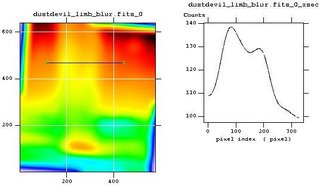Advanced astronomy, Mayan-style
 There was a time when astronomy was not publically viewed as an abstract intellectual endeavor or a hobby, but was instead one of the bedrocks upon which the greater ancient civilizations relied. Without astronomy, there could be no calendar or accurate time-keeping. Without a calendar, agriculture was much less efficient. Inefficient agriculture lead to slow population growth and vulnerability to famine or conquest, as any player of 4X-style computer games like Civilization know all to well.
There was a time when astronomy was not publically viewed as an abstract intellectual endeavor or a hobby, but was instead one of the bedrocks upon which the greater ancient civilizations relied. Without astronomy, there could be no calendar or accurate time-keeping. Without a calendar, agriculture was much less efficient. Inefficient agriculture lead to slow population growth and vulnerability to famine or conquest, as any player of 4X-style computer games like Civilization know all to well.
The image is of a Mayan calendar, with eighteen 2-day months plus a 5-day extra month, comprising a 365-day year (no leap year). Today is 3 Men 8 Kankin, by the way.
Indeed, Mayan astronomy was very advanced for that period in time, even compared to the middle-eastern civilizations we commonly consider to be the "Great Ancient Civilizations", as was their civilization.
To give you more of a taste for their sophistication, I reproduce below an excerpt from an article at Orcinus - the link to the full article "Bringers of Light and Death" is here (the article discusses the extremely misleading and racist treatment of Mayan civilization portrayed in Mel Gibson's latest film Apocalypto).
Mayan culture featured a complex and fascinating cosmology. Their art was both sublime and beautiful. And their language -- which was so complex and unusual in structure that it only has been deciphered generally in the past 20 years or so, and is still not completely so -- produced a massive literature that included poetic, religious and philosophical works.
However, we only are able to obtain a slight glimpse of this body of work today because those Spanish "saviors," in the two centuries following their arrival, successfully eradicated, through forced burning, nearly the entirety of it. As Michael D. Coe observed in his 1987 book The Maya:
- "[O]ur knowledge of ancient Maya thought must represent only a tiny fraction of the whole picture, for of the thousands of books in which the full extent of their learning and ritual was recorded, only four have survived to modern times (as though all that posterity knew of ourselves were to be based upon three prayer books and 'Pilgrim's Progress')."
Their scientific and agricultural achievements were also substantial. Their astronomical observations in particular were extremely accurate; modern scientists note that their lunar and planetary charts are at least the equal of, if not superior to, those produced by any civilization working from the naked eye. And their astronomical achievements also played a role in their architecture; as David E. Stannard explains in American Holocaust: The Conquest of the New World [p. 38]:
- ... [I]t is important at least to point out how little we still know of these people. Their involved writing system, combining elements of both phonetic and ideographic script, for example, appears to have been fully expressive of the most intricate and abstract thinking and has been compared favorably to Japanese, Sumerian, and Egyptian -- but it continues to defy complete translation.
Similarly, for many years the absence of a gridwork layout to streets, plazas, and buildings in Maya cities puzzled scholars. Right angles weren't where they logically should have been, buildings skewed off oddly and failed to line up in the expected cardinal directions; everything seemed to twist away from an otherwise northward presentation. Apparently, said some archaeologists, Maya builders were incompetent and couldn't construct simple right angles. Given the exquisite and precise alignment of every other aspect of Maya architecture, however, others thought this to be at best a hasty criticism. And now it is beginning to become evident that these seeming eccentricities of engineering had nothing to do with incompetence.
On the contrary, a complicated and original architectural pattern had always been present -- the same pattern, some began to notice, in city after city after city -- but its conceptual framework was so foreign to conventional Western perception and thought that it remained effectively invisible. Recently the "code," as it were, of Maya engineering and construction has begun to be deciphered, and the story it reveals is mind-boggling. So precise were the Maya calendrical measurements and astronomical observations -- and so central were these cosmic environmental calculations to their ritual and everyday lives -- that the Maya constructed their cities in such a way that everything lined up exactly with specific celestial movements and patterns, particularly as they concerned the appearance and disappearance of the planet Venus in the evening sky.

























